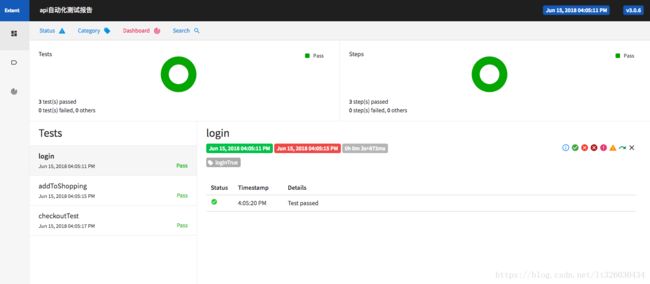接口自动化落地(二:HttpClient+testNG实现对接口的测试及校验)
在接口自动化落地(一:MySQL+MyBatis实现对测试用例数据的读取)中已经实现了基础配置和测试用例数据准备,本篇文章将以登录举例进行测试执行。
这是之前login接口的代码
@Test(groups = "loginTrue",description = "用户登录接口测试")
public void loginTrue() throws IOException {
SqlSession session = DatabaseUtil.getSqlsession();
LoginCase loginCase = session.selectOne("loginCase",1);
System.out.println(loginCase.toString());
System.out.println(TestConfig.loginUrl);
}接下来只需要进行两步:1.发送请求 2.验证返回结果
//第一步发送请求
String result = getResult(loginCase);
//第二步验证返回结果
Assert.assertEquals(loginCase.getExpected(),result);getResult方法被我抽离出来了放在下面,原因是无论我是登录成功,或者登录失败,等会执行相同的操作,只是测试数据和校验部分会不一样。
这是getResult方法的具体代码:
private String getResult(LoginCase loginCase) throws IOException {
HttpPost post = new HttpPost(TestConfig.loginUrl);
//设置body部分
JSONObject param = new JSONObject();
param.put("userName",loginCase.getUserName());
param.put("password",loginCase.getPassword());
//设置header部分信息
post.setHeader("content-type","application/json");
StringEntity entity = new StringEntity(param.toString(),"utf-8");
post.setEntity(entity);
//测试执行
String result;
HttpResponse response = TestConfig.defaultHttpClient.execute(post);
result = EntityUtils.toString(response.getEntity(),"utf-8");
System.out.println(result);
TestConfig.store = TestConfig.defaultHttpClient.getCookieStore();
return result;
}获取的结果会返回到result中,然后与mysql中存的预期值loginCase.getExpected()进行对比,如结果一样则测试通过。
